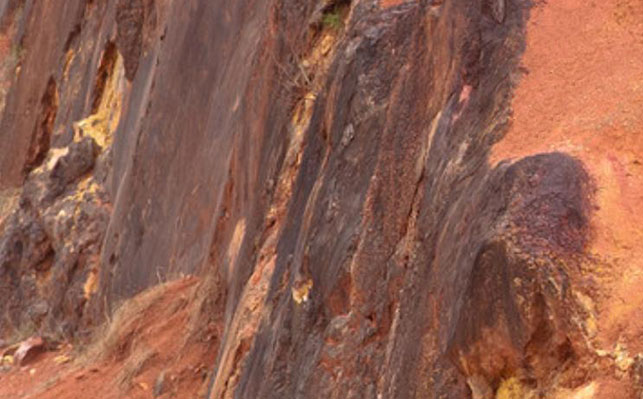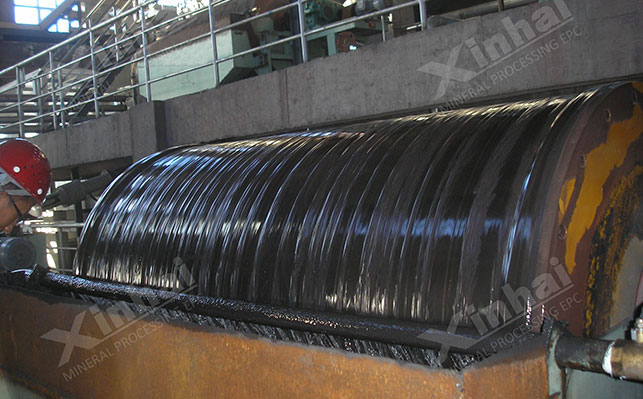
15311826613
Click to add WeChatOn the stage of nickel resources, laterite nickel ore has gradually emerged with its rich reserves. However, its complex ore properties have brought considerable challenges to ore dressing work. Its complex composition and difficulty in extraction have posed severe challenges to processing technology. In-depth research on laterite nickel ore processing technology is of great significance for ensuring the stable supply of nickel resources and promoting the sustainable development of the nickel industry.
Laterite nickel ore has the typical characteristics of high iron, low nickel and high moisture. Its iron content is usually between 30%-60%, the nickel content is generally 0.8%-2.5%, and the moisture content can be as high as 20%-30%. In addition, it also contains magnesium, silicon, cobalt and other elements. This composition characteristic makes the processing of laterite nickel ore difficult, and targeted technology is required to achieve effective extraction and separation of nickel.

Compared with sulfide nickel ore, the extraction difficulty of laterite nickel ore is significantly higher. Nickel in sulfide nickel ore mainly exists in the form of sulfide, and a good enrichment effect can be achieved through conventional beneficiation methods such as flotation. However, nickel in laterite nickel ore mostly exists in the form of oxides or hydroxides, and is often closely combined with elements such as iron and magnesium, and the mineral structure is complex. This makes it difficult for traditional beneficiation methods to work, and more complex and special processing technologies, such as high-temperature pyrometallurgy or strong acid wet process, are required.
Laterite nickel ore can be divided into limonite type and saprolitic type according to mineral composition and degree of weathering. Limonite type laterite nickel ore has high iron content, relatively low nickel content, and loose structure. It is usually more suitable for hydrometallurgical technology, such as high-pressure acid leaching or atmospheric pressure acid leaching, to achieve effective leaching of nickel. Saprolitic type laterite nickel ore has relatively high nickel content, low iron content, and a dense texture. Pyrometallurgical technology (such as rotary kiln-electric furnace method) or specific hydrometallurgical process may be more suitable.
Rotary kiln-electric furnace method: first dry the laterite nickel ore to remove the moisture in it to reduce the energy consumption of subsequent processes. Then the dried ore is sent to the rotary kiln and roasted at a temperature of 800-1000℃ to reduce some of the iron and nickel oxides in the ore. The roasted ore enters the electric furnace and is further smelted at a high temperature of 1500-1600℃ to finally obtain nickel-iron alloy. Suitable for saprolitic ore with medium and high nickel grades,
Sintering-blast furnace method: first mix the laterite nickel ore with flux (such as limestone, dolomite, etc.) and then sinter it to make a sintered ore with certain strength and permeability. Then the sintered ore is sent to the blast furnace, and under the reduction effect of coke, it undergoes a smelting reaction to finally obtain products such as nickel iron or nickel matte.
Direct reduction-magnetic separation method: It is to reduce and roast the laterite nickel ore under certain temperature and atmosphere conditions to reduce the nickel and iron oxides in the ore to a metallic state. Then, the magnetic separation equipment is used to separate the nickel and iron according to the magnetic difference between the nickel-iron alloy and other minerals. It has a certain processing potential for low-grade laterite nickel ore. Through reduction roasting, the nickel and iron in the low-grade ore can be enriched to a grade with economic value.

First, the laterite nickel ore is crushed to make its particle size reach a suitable range to increase the contact area with the leaching agent. Then the crushed ore is sent to the autoclave and acid-leached with sulfuric acid at 240-260℃ and 4-5MPa to dissolve metals such as nickel and cobalt into the solution, while impurities such as iron and magnesium form precipitation and remain in the slag. The solution after acid leaching is neutralized, the pH value is adjusted, and some impurity ions are removed. Finally, valuable metals such as nickel and cobalt are separated and enriched from the solution through the extraction process.
Mainly using sulfuric acid or nitric acid as a leaching agent, the laterite nickel ore is treated by heap leaching. That is, the laterite nickel ore is piled in a specific site, and then sulfuric acid or nitric acid solution is sprayed on the ore pile, so that the solution slowly penetrates in the ore pile, reacts with nickel and other metals in the ore, and achieves metal leaching. Suitable for limonite-type low-nickel ore, this type of ore structure is relatively loose, and the acid can penetrate and react well under normal pressure conditions.
It is first reduction roasting and then ammonia leaching. Reduction roasting can reduce the nickel oxide in the ore to metallic nickel, and most of the iron oxides are reduced to iron oxide. Then the roasted ore is leached with ammonia water, and the metallic nickel reacts with ammonia water to form a soluble nickel-ammonia complex that enters the solution, while impurities such as iron remain in the slag. The leaching solution is treated with subsequent treatments such as distillation to obtain nickel products.
Laterite nickel ore processing technology shows a diversified development trend. Although pyrometallurgical technology has problems such as high energy consumption and pollution, it still occupies an important position in the current laterite nickel ore processing due to its mature process and high production efficiency, and its sustainability is continuously improved through technical improvements such as optimizing energy utilization and improving waste gas treatment. Hydrometallurgical technology has been continuously expanded in its application scope due to its strong adaptability to different types of ores, high product purity and relative environmental protection, especially in the production of new energy battery raw materials such as nickel sulfate.